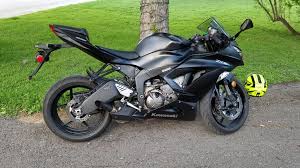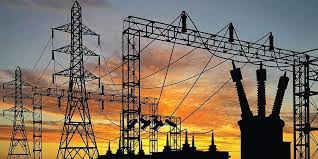and were mostly used for passenger traffic. However, today, modern railways are primarily used for freight transport.
Modern railways began in the 1500s
During the 1800s, railways were a revolution in the way we moved around. They provided a more efficient way of transporting passengers and goods. These railways also transformed the sale of perishable goods. Until that time, people had to use horse-drawn wagons to move their goods across the country.
By 1850, 783 million passengers had traveled on rails, and 303 million tons of goods were transported on the nation’s rails. In Germany alone, 5,000 kilometers of track had been laid by 1849.
In 1837, Prussia, Braunschweig, Baden, and Hessen-Darmstadt all established state-owned railways. Their networks grew rapidly in the 1840s, paving the way for German unification.
In England, the first public railways in Britain were built in the early 1800s. The Stockton and Darlington Railway opened in 1825. It was the first railway to carry passengers. The railway combined locomotive power with early signaling and twin tracks.
The second railway in Britain, the Liverpool and Manchester Railway, opened in 1830. It was constructed when locomotives could not maintain a regular service over long distances. The next step in railway development was the building of the Albion Railway, which connected coal mines to seaports.
Another railway, the Tanfield Railway, was built in County Durham, England in 1725. Although not a railway in the modern sense, it was still built with wooden rails. It continues to be operated as a heritage line.
By the mid-1800s, locomotives replaced horses as the source of horsepower for cargo. Steam locomotives were soon used to accommodate the first passengers.
Wooden rails
Until the late eighteenth century, railways in Europe were built of wooden rails. Germans reasoned that the horse-drawn vehicles could travel over wooden rails more easily than on dirt roads.
The earliest railways in Europe were built in the early seventeenth century. They were used primarily for transporting coal.Today’s rails are typically made from hot-rolled steel.
The most basic rail is a pair of steel bars, or rail surfaces, that provide running surfaces for the wheels of trains. Modern rails may also be made from continuous welded rails, or CWRs. They are stronger, lighter, and require less maintenance than jointed tracks.
Modern rails are usually made of a high-quality steel alloy. The rail may be a fixed-length segment or may be manufactured in multiples. In North America, the rails may be accompanied by a “joint bar” or fishplate, which is a perforated steel plate used to join rail segments. In the UK, a rail may be supplied pre-drilled with a bolthole for the fishplate.
The longest rails are sometimes several kilometers long. A rail may be straight or banked. They may be cushioned or ballasted to reduce lateral forces. In some applications, pre-stressed concrete sleepers are used.
The rail may also have an inverted-V profile. It may also be an I-beam girder. Its weight is usually 80 to 160 pounds per yard.
Steam locomotives
Generally speaking, a steam locomotive is a locomotive on wheels that is powered by steam. Steam locomotives can be either oil or coal-fired. In the United States, the steam locomotive industry got off to a fast start. In the early 1830s, American locomotive manufacturers were producing steam locomotives.
Generally speaking, a steam locomotive consists of a boiler, a smokebox, a cab, and two or more cylinders. Typically, a steam locomotive will admit steam to each end of its cylinders in turn. These two strokes of steam to generate a full revolution of the driving wheel.
The first steam locomotives had two cylinders, each on one side of the locomotive. Later designs were equipped with three or four cylinders. The running gear of a steam locomotive consists of wheel sets, axleboxes, connecting rods, and valve gear.
The running gear of a locomotive affects adhesion to the rail. The number of axles required is determined by the weight of the locomotive divided by the axle load limit.
Depending on the design of the locomotive, water is fed to the boiler by an axle pump at a service speed, or by steam injectors at low speed. In most cases, water is carried on the tender, which is usually mounted directly behind the boiler.
In the early 1900s, most steam locomotives were replaced by electric locomotives. The locomotives were still used by some railroads in developing countries. In Australia, many steam locomotives were converted to oil-fired after World War II.
Block train transportation
Increasing numbers of block train transportation services are running between China and Europe in recent years. These services offer a number of benefits to both parties. For example, they avoid traffic problems and allow for non-stop delivery of cargo to a destination. They are also environmentally friendly and provide a short lead time.
Block train transportation services are designed for customers who need to transport large volumes of cargo. They can also provide additional services such as route tracking, customs rates, and other logistics solutions.
Block train transportation services are not only fast but also environmentally friendly. They also help to reduce the cost of transport. Unlike traditional transport methods, block train transportation services have a fixed infrastructure. They avoid delays at border chokepoints. They also provide clear information on voyage times, which allows for healthy planning.
The block train is a transport system that uses an ensemble of freight cars to carry cargo to a specific destination. The system is designed to meet the market’s needs for transporting small or large consignments. It is a specialized transportation service that is used primarily to transport containers.
It is important to understand how block-train transportation works. A block train is a transport service that operates according to a fixed schedule and has a fixed stop. It is also important to understand that block train transportation is not a substitute for conventional rail transport.
Railroad brake operators
During the run of a train, the railroad brake operator helps to ensure that the train does not crash. The operator may have duties such as coupling and separating train cars, monitoring pressure gauges, and connecting air hoses to cars.
Typically, these jobs are full-time. They are paid based on experience. They often work nights, holidays, and weekends. A typical salary range for a Railroad Brake, Signal, and Switch Operator are $34,610 to $85,590.
Railroads must perform inspections of the brake system on freight trains. The primary brake system must be able to stop the train within signal spacing. It is important to maintain a high degree of reliability. The system may be pneumatically or electrically operated.
There are many different types of brakes. The air brake is a combination of devices that use compressed air. The electrical brake is controlled electronically. A mechanical securement device is a different type of air brake.
The primary brake system must be able to provide sufficient retarding force for stopping the train under all operating conditions. Brakes are designed to provide reliability, safety, and performance.
Railroads must maintain a record of the brake system’s testing. These records may be maintained in writing or electronically. The record must contain the location of the Class I brake test, the number of freight cars inspected, and the time of the test. The record must also include the qualified person(s) performing the test.
European railways devoted primarily to passenger traffic
Unlike the United States, where railroads are privately owned, European railways are mostly government-owned. This translates into lower revenues and a higher cost of ownership, and the result is that European railroads are not as profitable as their American counterparts.
European railways are primarily used to transport passengers, which is why you’ll see a lot of traffic on rails whizzing from one place to the next. High-speed rail systems haven’t necessarily lowered air travel, although many advocates claim this to be the case. Instead, these systems have put countries into debt and have largely failed to resuscitate economies. Despite these drawbacks, it’s clear that Europe has a fondness for passenger rail.
The European Rail Traffic Management System is a good example of a system that improves the speed and capacity of train infrastructure. The system is also capable of ensuring interoperability among the various national railway systems in Europe. The ERTMS comprises the European Train Control System and the Global System for Mobile Communications for Railways, or GSM-R for short. The system is capable of increasing the speed of train traffic by as much as 25 percent.
The TGV is the king of the high-speed train world, which whizzes between Paris and Bordeaux at an average speed of 200 miles per hour. The high-speed rail has been a boon to European tourism, as well as freight hauling. Currently, more than 50% of the French rail network is electrified.




















+ There are no comments
Add yours